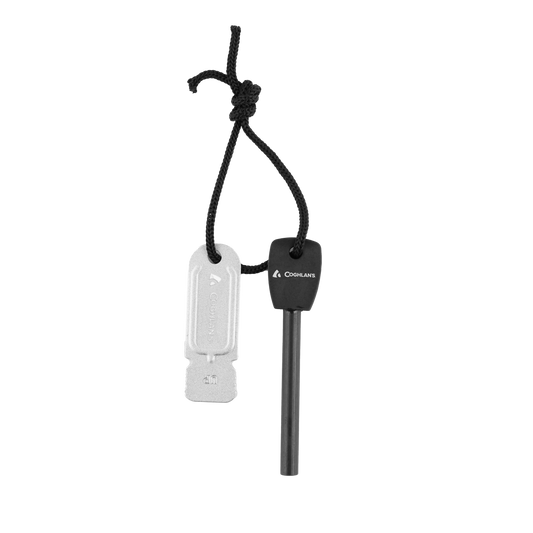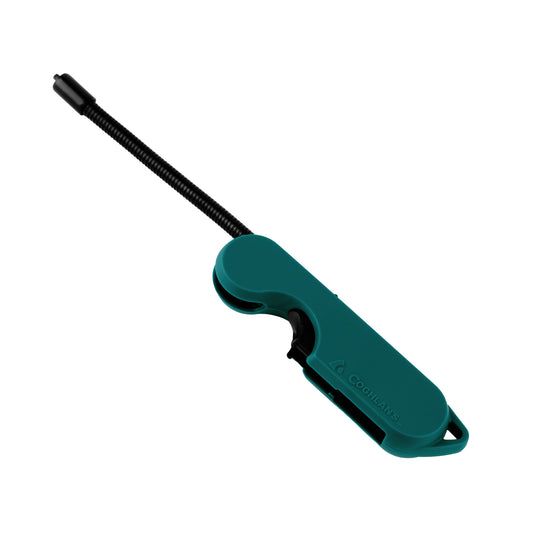Before the Blaze:
Before you start building a fire, be sure that you’re properly equipped and following the local regulations. Most campgrounds will provide fire permits and local firewood to prevent diseases from spreading between ecosystems – so be sure to not transport firewood from location to location! Make sure that campfires are permitted, there are no active fire bans and that an established fire ring present. Practice fire safety, make sure you have water on hand and always make sure your fire is fully extinguished when you leave the area or go to sleep.
Fire Styles:
No matter how you build your fire, it will always require the same three components: tinder (twigs, newspaper, or leaves), kindling (small sticks) and firewood. Typically, the two most common methods of building a fire are the “Log Cabin” style, or the “Teepee” style.
Log Cabin: By using two logs laid parallel at the base of the fire, and then placing two more criss-crossed on top, you’ve created an enclosed space for your tinder and kindling, which provides greater stability and longevity for your fire. A ‘Log Cabin’ fire is also typically easier to adjust and add onto while it continues to burn as you can continue to build up the sides.
Teepee: This fire style requires a bit more strategy in terms of log placement. Your tinder and kindling will be gathered at the base of the fire pit, but here the logs will be placed upwards and leaning onto one another over the center of the firepit. This arrangement of the logs can make your fire more susceptible to a sudden collapse while burning. However, by having more of the log directly over the tinder and kindling, your fire is more likely to ignite on the first attempt and reach an intense heat quickly.
Start It Up:
If this is your first rodeo, do yourself a favor and choose a method that is more beginner-friendly. There’s no sense in making things more difficult than they need to be. So, take your pick: a disposable lighter, some matches, a flint striker, or a magnesium bar. These are all great methods for starting a fire, but you should always pack more than one – just in case. No one wants to dig through an entire bag only to realize their lighter fell out of their pocket on the trail.
Building a fire does take a bit of technique, unfortunately you can’t toss a match next to a log and call it a day. Start by lighting your tinder and kindling and let that initial spark light the larger logs. Bring grocery flyers and egg cartons from home and pair them with found twigs to make a strong base. When stacking your firewood, make sure you aren’t cramming them too close together. You want to be mindful of leaving vents for air to flow in and out – this helps increase the fire’s size and temperature. Finally, make sure that your wood is dry. Even if the bark and outer layers seem dry, those inner portions can retain plenty of moisture, meaning they’ll smoulder instead of burn. Now you’re all set, light it up!
Boost Your Bonfire:
The weather won’t always play nice; on those windy and rainy days it can prove to be quite a challenge to keep a flame going. Add tools like the Coghlan’s Fire Sticks or Fire Discs to your camping kit to help give your fire that extra kick to keep the burn going. With up to 30 minutes of burn time, these fuel sources are great for front country trips, emergencies and everything in between.
Extinguishing the Campfire
Once your gang is ready to turn in for the night, be sure to fully extinguish your fire. This can be done by pouring water on it but be careful to not scald yourself from the steam that will come out. Be sure to stir the ashes around to better distribute the water, you want to make sure that all embers are extinguished and there is no chance of the fire reigniting. We’re looking for cold, wet ashes. Leaving a campfire burning isn’t just risky, but can result in a fine from Park Patrol if your behaviour is deemed negligent and irresponsible. Nearly 90% of forest fires are caused by people and could have been prevented. Take that extra moment to double-check your fire is out and do your part in protecting our parks and forests.
Whether it’s your first camping trip or your 50th, knowing how to build and care for a campfire is part of being a camp hero. Be sure to review Leave No Trace principles and be knowledgeable of safe fire building and extinguishing practices. At the end of the day, it’s not about being perfect, it’s about being prepared. Now go on and gather the crew for some marshmallows and let the good times glow.









